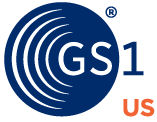GS1 Digital Link “web-enables” barcodes by providing a simple, standards-based structure for encoded data in any 2D line-of-sight data carrier. Given that GS1 Digital Link is a standards-based structure, it allows the use of simple rules so apps, websites, and POS scanners can enable connections, shopping experiences, interesting product content, and more.
What does Digital Link offer your retail business?
Digital Link helps make it possible to improve safety and efficiency within your operations. It makes it possible for you to:
- Flag recalled, expired, or counterfeit products in the warehouse and at the point of sale
- Automatically discount products nearing or past their expiration date
- Conduct more effective returns management and deliver better consumer experience
- Improve business-to-business processes for data sharing
How Digital Link works
Consumers scan a single barcode with their smartphones. Your employees scan the same code in your warehouse or at the point of sale. In both cases, the web-enabled barcode directs the user to an intelligent product identity in the cloud. Based on that intelligent product identity, your employee or consumer is directed to a variety of digital content and services to enhance safety and experience.
Resources
Webinars and Training
Proof of Concept
Related Research
Introducing GS1 Digital Link
Discover how GS1 Digital Link connects a product's unique identity to online sources of real-time information that brands can control, strengthening brand loyalty and improving supply chain traceability.
How can you get started with Digital Link?
Whether you use internal resources or engage a GS1 US Solution Provider, here are some core considerations as your trading partners begin to label their products with 2D barcodes containing Digital Link.
Consideration 1: Retailer-specific experiences
Determine whether you will want to enable retailer-specific experiences for products you sell. To do this, you will need to work with the products’ Digital Link within your consumer-facing and/or store associate app. Some possibilities you may want to explore include linking to:
- Re-order a product
- Retailer-specific promotional information
- Brand-specific product information
- Store associate– specific information
Consideration 2: Changes to point-of-sale or other internal systems
Changes to point-of-sale or other internal systems Based on retailer-specific experiences you may want to share with your customers, consider the impact to current systems and determine priorities and a path to implementation. GS1 US has a sunrise date of 2027 for acceptance of 2D barcodes at point-of-sale. US industries voiced the need to transition to 2D barcodes to encode additional data attributes and GS1 Digital Link on packaging to empower advanced use cases. Brand owners are now transitioning packaging to include 2D barcodes, while retailers are upgrading their POS systems to enable 2D barcode scanning and processing.
During the transition, items will require dual marking with U.P.C. and 2D barcodes. After the 2027 sunrise date, the goal is that 2D barcodes – including those encoded with GS1 Digital Link – can be scanned at POS by all retailers. U.P.C. barcodes will continue to be accepted and scanned after the 2027 sunrise date. These changes will drive opportunity to enable additional value-add features at point-of-sale, as well as other retailer process improvements (see Consideration 3).
Consideration 3: Future use cases GS1 Digital Link can enhance
Work with your internal resources and your trading partners to determine other use cases where GS1 Digital Link can provide benefit. Examples may include:
- Improving inventory management
- Enhancing in-store expiration date and recall management
- Stopping sale of recalled products at point-of-sale
- Automatically discounting or stopping sale of products nearing or past their expiration date
